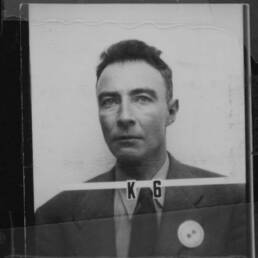The pristine Seychelles waters; Basra port in Iraq, and the UAE are some of the places where the Rupee was once used as legal tender. A article looking back at some of the international ventures of the Rupee on the 6th anniversary of our demonetization adventure.
The Indian rupee was once the official currency of countries such as Aden (Yemen), Oman, Dubai, Kuwait, Bahrain, Qatar, the Trucial States, Kenya, Tanganyika, Uganda, Seychelles, and Mauritius.
Starting with our neighbor, post-partition, the Pakistani rupee came into existence, initially using Indian coins and notes, over-stamped with “Pakistan”. In 1948, Pakistan started issuing its own currency – the Pakistani Rupee.
Westward, the Indian government introduced the Gulf rupee as a replacement for the Indian rupee for circulation outside the country in 1959. The creation of a separate currency was an attempt to reduce the strain on India’s foreign reserves from gold smuggling.
After the devaluation of the rupee in 1966, the countries still using it – Oman, Qatar, and the Trucial States (which became the UAE in 1971) – replaced the Gulf rupee with their own currencies. Kuwait and Bahrain had already done so in 1961 and1965 with their respective Dinars.
Aden, a port in Yemen was under the Bombay Presidency till 1937. The Indian Rupee was used there as well.
Indian goods came into Basra, Iraq to be re-exported to Persia. Even before the collapse of the Ottoman Empire, the rupee had been in use in Basra. By 1918, it had become the official currency. The rupee prevailed there till Iraq’s independence in 1932.
Eastward, the Straits Settlements were originally an outpost of the British East India Company. The Indian rupee was made the sole official currency of the Straits Settlements in 1837, as it was administered as part of British India. This attempt was resisted by the locals.
In 1867, the administration of the Straits Settlements was separated from India and the Straits dollar was made the standard currency, and attempts to reintroduce the rupee were finally abandoned.
In Mozambique, the British Indian rupees were over-stamped, and in Kenya, the British East Africa Company minted the rupee. It was maintained as the florin, using the same standard, until 1920. In Somalia, the Italian colonial authority minted ‘Rupia’ to exactly the same standard.
In India itself, there were multiple rupees. The Indian rupee replaced the Danish Indian rupee in 1845, the French Indian rupee in 1954, and the Portuguese Indian escudo in 1961.
Following the independence of India in 1947 and the accession of the princely states to the new Union, the Indian rupee replaced all the currencies of the previously autonomous states (although the Hyderabadi rupee was not demonetized until 1959).
By 1942, an acute scarcity of small coins was felt throughout India, as the second world war had kept the mints busy issuing imperial coins. Princely states like Bikaner, Bundi, Junagadh, Nawanagar, Rajkot, and many more issued Cash Coupons to meet the shortage.
India, at present, does not permit rupees to be officially used for international transactions except those with Nepal and Bhutan (Bhutanese Ngultrum is at par with the Indian Rupee). The Indian rupee is also accepted in towns on the Nepalese side of the Nepal-India border.
Sources:
Rajiv Ranjan, Anand Prakash, Internationalisation of currency: The case of the Indian Rupee and the Yuan Renminbi https://rbidocs.rbi.org.in/rdocs/PublicationReport/Pdfs/RRSS180510F.pdf
Rosie Llewellyn Jones, THE BRITISH RAJ AND THE BRITISH MANDATE IN IRAQ, https://doi.org/10.1080/03068374.2015.1037165
RBI – https://rbi.org.in/Scripts/pm_cashcoupons.aspx
DC Stamps – http://www.dcstamps.com/straits-settlements/
Clauson, G. L. M. “The British Colonial Currency System.” The Economic Journal 54, no. 213 (1944): 1–25. https://doi.org/10.2307/2959827.




